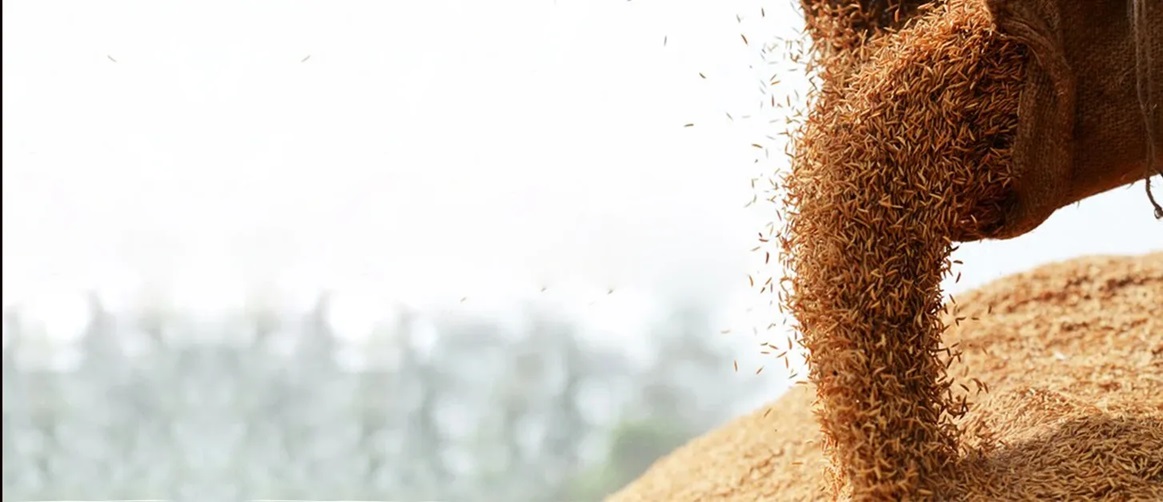Engineering Solutions for Paddy Post-Harvest Challenges
By Eng. Mahesh Dissanayake
The following is an excerpt from the article ‘For Paddy Post-Harvest Stage: Develop Small Parboiling Plants with Locally-Made Boilers,’ published in The Morning newspaper on January 29, 2025. In this article, Chartered Agricultural Engineer and former Director/CEO of the Post-Harvest Management National Institute, Eng. Mahesh Dissanayake, was interviewed by Mr. Buddhika Samaraweera.

- Chartered agri. eng. and fmr. Post Harvest Mgt. Nat’l Institute Director/CEO Mahesh Dissanayake says weather forecasting could be better integrated into farming practices
- Suggests providing more localised, accurate forecasts and making them more accessible to farmers through mobile apps or community-based systems
- Dissanayake also calls for developing early-maturing paddy varieties and introducing intermediate/3rd season for paddy
Sri Lanka’s paddy cultivation faces several challenges, particularly during the post-harvest stage, which includes harvesting, threshing, cleaning, drying, storage and milling. In addition to the typical processes involved, there are opportunities to improve the efficiency of these stages, reduce losses, and increase productivity.
By introducing advanced technologies, better resource management, and addressing the concerns of wild animal damage, the country’s agricultural industry can play well in both the local and export markets.
In an interview with The Daily Morning, chartered agricultural engineer and National Institute of Post Harvest Management of the Ministry of Agriculture, former Director/Chief Executive Officer Mahesh Dissanayake discussed the current practices, challenges, and potential solutions to enhance the post-harvest process and the agri-export sector in Sri Lanka.
Following are excerpts from the interview:
What are the main post-harvest stages in paddy cultivation? Who are the stakeholders involved? What infrastructure (e.g., space, temperature control) is required?
Major post-harvest stages and operations include harvesting, threshing, cleaning, drying, storage, and milling. Regarding harvesting, currently, most farmers in Sri Lanka harvest paddy using combine harvesters, while some also use mechanical harvesters. Traditionally, paddy harvesting was done manually using a sickle. Concerning threshing, this process separates grains from the panicles and is one of the most crucial stages in the post-harvest system.
Today, the majority of farmers use head-feed combine harvesters for both harvesting and threshing. In earlier times, four-wheel tractors and mechanical threshers were commonly used. On cleaning, after threshing, freshly harvested paddy typically contains impurities such as dust, dirt, chaff, and straw pieces. Mechanical threshers and combine harvesters come equipped with cleaning and separating mechanisms.
However, most farmers don’t remove larger and smaller impurities before storing the paddy. When it comes to drying, it is carried out either on-farm or off-farm, using methods such as field drying, sun drying, or mechanical drying. While most farmers and traders rely on sun drying, millers often use mechanical drying. Paddy needs to be dried to a moisture content of 14% (wet basis) before storage. Pertaining to storage, the seasonal nature of paddy harvests creates the need for proper storage to ensure a consistent year-round food supply. Farmers sell part of their harvest – known as the marketable surplus – and retain the rest for personal consumption, seed purposes, and future sales.
Traders and millers buy paddy from farmers and store it for their needs. Storage must protect against weather, pests, microorganisms, moisture, and contamination. In Sri Lanka, the two main storage methods are bag storage and bulk storage. Farmers typically store paddy in poly-sacks at home, while traders and millers store it in warehouses. Some leading millers use silos for bulk storage. The moisture content should be maintained at 14% or less. The bulk density of paddy ranges from 563-642 kilograms per cubic metre. In bag storage, each tonne requires about 0.47 square metres of floor space, and the bags are stacked 16 bags high.
Proper temperature and humidity conditions must be maintained in warehouses and silos. For milling, two main types of rice are produced in Sri Lanka: Raw rice (white raw rice, samba raw rice, and keeri samba raw rice) and parboiled rice (nadu, samba, and keeri samba). Nearly 65-70% of Sri Lanka’s total paddy production undergoes parboiling, a pretreatment that enhances storage, processing, and nutritional quality. Raw rice is produced directly from fresh paddy.
Are there value additions during these post-harvest stages? If so, what are they? How are they carried out? And what benefits do they offer?
Yes, farmers harvest fresh paddy with a moisture content ranging from 17–25% (wet basis). The paddy is then dried to a moisture content of 14% (wet basis) using either sun drying or mechanical drying methods. Properly dried paddy is stored by farmers, traders, and millers for periods ranging from one to 12 months.
The stored paddy is converted into milled rice using rice milling machines. Milled rice is used directly for human consumption as food, as well as for processing into rice flour, beer, and animal feed. Rice milling generates by-products such as rice bran and paddy husk. Rice bran is primarily used for animal feed and the production of rice bran oil. Paddy husk, on the other hand, is used as fuel in boilers to produce steam for paddy drying and the parboiling process. Additionally, a portion of the paddy husk is utilised in the poultry industry and brick-making industry.
What types of losses typically occur during post-harvest stages? What are the primary causes?
Paddy is a living organism that undergoes inherent metabolic activities such as respiration and germination. However, the use of improper post-harvest technologies often leads to significant quantitative and qualitative losses during operations like harvesting, threshing, cleaning, drying, storage, parboiling, and milling. Post-harvest quantitative losses in paddy are estimated to be approximately 10% of the annual production.
Several factors contribute to this issue, such as the lack of appropriate post-harvest handling equipment and processing facilities, storage-related pest infestations, diseases, mycotoxin contamination, biological deterioration, and moisture-related loss due to unscientific storage practices. There are additional losses that arise from spillage, inefficient retrieval, and processing factors such as operator skills and inefficient machines. Furthermore, the absence of workable standards for proper inspection and grading systems further these challenges.
What solutions are available to minimise or recover losses in the post-harvest process? How effective are they?
Drying facilities are essential for reducing the high moisture content of freshly harvested paddy. Many farmers sell their freshly harvested paddy to traders or millers because they don’t have adequate drying facilities. Farmers often dry their paddy on roadsides, in small drying yards, or on tarpaulin sheets. Mechanical dryers are the most effective option for paddy drying. Additionally, proper storage facilities are important for safely storing paddy over extended periods. Paddy storage should take place in standard warehouses constructed and maintained according to established practices to ensure quality and minimise losses.
What is the journey of paddy from storage to the miller? What critical factors should be monitored to ensure quality and minimise losses?
Paddy is stored by farmers, traders, and millers, with its quality primarily assessed by the moisture content, following Sri Lankan standards for paddy. This stored paddy is used for rice milling, where miller's first pre-clean the paddy to remove impurities such as stones. For raw rice production, the cleaned paddy is sent directly to the milling process. For parboiled rice, the cleaned paddy undergoes soaking, steaming, and drying before milling. High-quality rice depends on good-quality paddy, and proper drying and storage are essential. Farmers, traders, and millers should ensure that paddy is dried adequately and stored correctly to preserve its quality. During parboiling, millers need to soak the paddy with regular water changes, steam it at the right time and pressure, and dry it in two stages at the correct temperatures. These practices are very important for minimising losses and producing high-quality rice.
What technology is currently used in post-harvest handling and the processing of paddy? Are there areas where improvements or new innovations are needed?
Paddy harvesting, threshing, and cleaning are mainly carried out using combined harvesters, with some farmers and traders also employing mechanical methods. Sun drying is the dominant practice among farmers and traders. Millers utilise both sun drying and mechanical drying. Paddy is typically stored in poly-sack bags, with farmers and traders, in most cases, lacking proper storage facilities, relying on rooms or basic buildings. Similarly, most traders use normal buildings for storage.
Paddy transportation is also done using poly-sack bags. Millers store paddy in either normal buildings or purpose-built facilities. Some leading millers are using metal silos for bulk storage, which requires less space and facilitates easier monitoring, control, and handling. The majority of millers use advanced parboiling plants with imported boilers, but small-scale millers rely on traditional methods that result in lower-quality parboiled paddy. Therefore, there is a need to develop small-scale parboiling plants with locally fabricated boilers. The rice milling process involves pre-cleaning, de-husking, whitening and polishing, grading, and separation. Enhancements in rice mills should focus on improving the whitening and polishing stages to ensure better rice quality.
Many products use preservatives for crops. Are there any specific preservatives or techniques used for paddy, and what are their benefits or drawbacks?
When paddy is stored for extended periods, pest infestation can occur. To manage this, farmers, traders, and millers apply chemicals by spraying them on the storage bags. Larger paddy stores managed by traders and millers typically use the fumigation method to control pest infestation. In this process, fumigant tablets are placed at selected locations within the store. These tablets release gas upon contact with moisture in the air, and eliminate pests. It is important that the paddy stores are properly sealed before fumigation to get maximum results. No residues remain on the paddy grains after fumigation.
How is rice utilised in animal feed, liquor production, and related industries? Are there concerns or challenges associated with these uses?
Rice is used as a substitute for maize in animal feed when maize is unavailable. Although Sri Lanka produces maize, it is not self-sufficient and relies on imports. Similarly, rice is used in beer manufacturing as a replacement for millet, which is also imported as it is not produced locally. The preference for rice in these industries is because of the lack of or high cost of the raw materials. This substitution benefits the country by utilising locally-grown rice, reducing the need for imports, and saving foreign exchange. To further this advantage, Sri Lanka should focus on increasing paddy production by minimising post-harvest losses and improving the paddy yield per hectare.
What measures should agricultural engineers recommend to mitigate damage caused by wild animals to paddy and other crops effectively?
Addressing the wild animal issue requires a multi-faceted approach. One best way is to use electric fences. One Sri Lankan engineer and the National Engineering Research and Development Centre have developed some advanced electric fences which elephants cannot damage and pass. They have some designs for other animals like monkeys and wild boars. This new method has no lethal effect on animals. The installation of electric fences is expensive and the general public cannot afford them, but commercial scale farmers can use them.
What steps can be taken to further develop Sri Lanka’s agri-export sector?
Sri Lanka has good potential for exporting agricultural products. Rice, sesame, fruits and vegetables, spices, tea, rubber, coconut and some organic agricultural products are exported at present. First, the country needs to increase the production for having an uninterrupted supply and to sustain the exports continually. It is also important to maintain the quality of our agricultural products during harvesting, handling, and transportation. It is required to introduce packing houses to process fruits and vegetables. Quality certification systems (Sri Lanka-Good Agricultural Practices) and the international acceptance of such systems are also important.
Is cultivating multiple crops on the same land more productive and advantageous? What are the potential challenges or drawbacks?
Optimum land utilisation is very much important. Paddy production in Sri Lanka has basically two cropping seasons called Yala and Maha. It is required to develop early-maturing paddy varieties and introduce an intermediate season for paddy. It will increase paddy production and the farmer’s income. Farmers can grow some other crops during the off-season like chillie, pumpkin, green gram, watermelon, etc. They will have to consider the availability of water and the harvesting time of crops. Farmers can use early-maturing varieties. Some countries like Vietnam practice this system and increase the income of farmers as they are engaging in cultivation throughout the year. The Government needs to supply water for cultivation throughout the year. Farmers need to use fertiliser and chemicals for cultivation for maintaining the fertility of the soil and controlling diseases.
Is Sri Lanka’s current crop season structure scientifically sound, or could it be improved for better productivity and resource management?
There are two distinct seasons locally called Maha (October-February) influenced by the Northeast monsoon, and Yala (March-September) influenced by the Southwest monsoon. Traditionally, farmers cultivate in these two seasons considering the water availability and pest infestation. The Government can introduce an intermediate season or a third season for better productivity and resource management. If such a season is introduced, farmers will engage in cultivation all over the year, and will not be idle.
How is weather forecasting currently utilised in Sri Lankan agriculture, and what steps can be taken to enhance its accuracy, accessibility, and relevance for farmers?
Farmers in Sri Lanka rarely use weather forecasting. They make decisions on cultivation based on their experience and traditional knowledge. Some farmers consider the weather forecast at the time of harvesting, threshing, and drying for planning their activities. However, weather forecasting could be better integrated into farming practices. Steps to improve its effectiveness could include providing more localised, accurate forecasts, and making them more accessible to farmers through mobile apps or community-based systems.
 Eng. Mahesh Dissanayake
Eng. Mahesh Dissanayake
Eng. Mahesh Dissanayake is a chartered agricultural engineer and former Director/Chief Executive Officer, National Institute of Post Harvest Management of the Ministry of Agriculture and Head of Research Division, National Science Foundation




